LG G5 vs Samsung S95F: Which flagship OLED TV is the better pick?
Choosing between these two incredible TVs won't be easy, but I can help
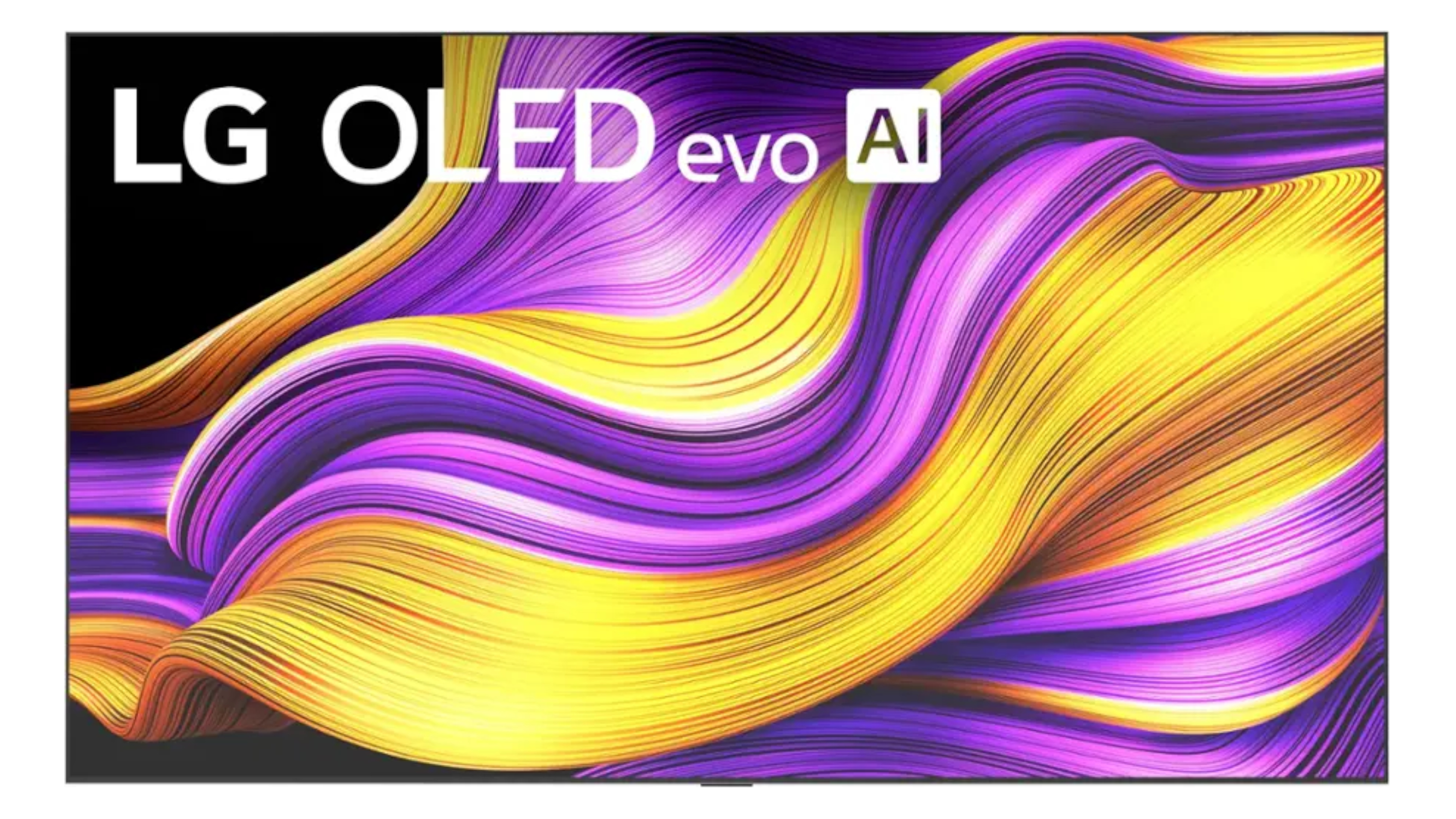
The LG G5 delivers an incredible picture with highlight brightness that rivals the Samsung S95F. Unlike the S95F, the G5 supports Dolby Vision. Keep in mind that the G5's stand is sold separately.
Pros
- Nearly unparalleled brightness for an OLED
- Gorgeous color
- Terrific gaming features
Cons
- A little pricey for what you get
- No ATSC 3.0 tuner
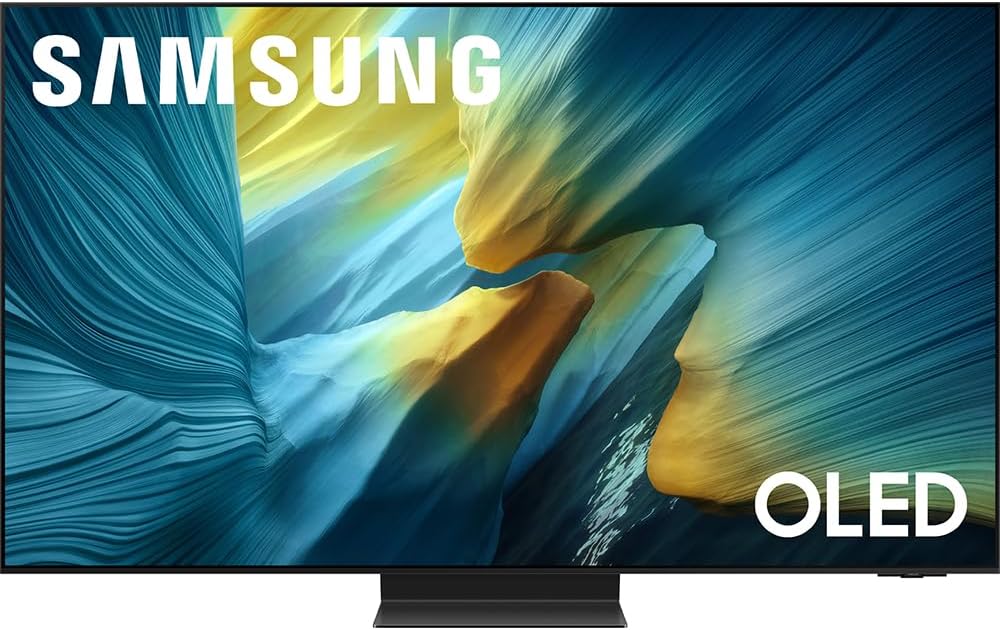
With incredible QD-OLED performance and ample features, the Samsung S95F is one of the year's best TVs. Its most significant missing feature is Dolby Vision support.
Pros
- Stunning picture quality
- Brilliant glare-free display
- Loaded with gaming features
Cons
- Cluttered UI
- No Dolby Vision support
- No ATSC 3.0 tuner
If you're ready to splash out on a flagship OLED TV, two heavy-hitters should be at the top of your list of candidates: the Samsung S95F and the LG G5.
Each of these flagship models showcases the benefits of OLED technology: perfect black levels, ultra-wide viewing angles and razor-sharp detail. Not only that, they represent the best of what each brand offers in the OLED class.
It's not easy choosing between two of the best OLED TVs money can buy, but I've got years of experience in this space, and I'm here to help. Here's how these sets stack up.
LG G5 vs Samsung S95F: Specs compared
| Header Cell - Column 0 | LG G5 | Samsung S95F |
|---|---|---|
Sizes | 55", 65", 77", 83", 97" | 55", 65", 77", 83" |
Ports | 4x HDMI 2.1 | 4x HDMI 2.1 |
Resolution | 3,840 x 2,160p | 3,840 x 2,160p |
Refresh rate | 165Hz | 165Hz |
HDR | Dolby Vision, HDR10, HLG | HDR10, HDR10+, HLG |
Smart TV software | webOS | Tizen OS |
ATSC 3.0 support? | No | No |
Processor | a11 AI Processor 4K Gen2 | NQ4 AI Gen3 |
When their specs are lined up side by side, it’s easy to clock just how similar these two TVs are.
Both the G5 and the S95F come in 55-, 65-, 77- and 83-inch models. I don't imagine too many folks are reading this who are considering something bigger than 83 inches. But if you are, make note of the fact that only the G5 is available in a gargantuan 97-inch model.
If you take gaming seriously, you'll be pleased to learn that each model offers a full suite of four high-bandwidth, HDMI 2.1-compatible ports. This is one of the advantages LG and Samsung flagships have over Sony flagships.
One of the biggest differences between these sets has to do with enhanced HDR formats.
Get instant access to breaking news, the hottest reviews, great deals and helpful tips.
Like all Samsung TVs currently on the market, the S95F does not support Dolby Vision. Instead, Samsung offers HDR10+, a royalty-free version of the format that works in a similar way.
You'll still be able to watch Dolby Vision-mastered streaming titles and Blu-ray discs on the S95F, but the picture will fall back to standard HDR10. Simply put, the S95F won't be taking full advantage of Dolby Vision's efforts to replicate the creator's intent.
Like all LG OLED TVs, the G5 supports Dolby Vision but leaves off HDR10+. For most viewers, this will be a better fit, as Dolby Vision is still the most popular of the two formats.
To learn more about Dolby Vision, check out our guide to whether or not you need Dolby Vision at all.
LG G5 vs Samsung S95F: Design
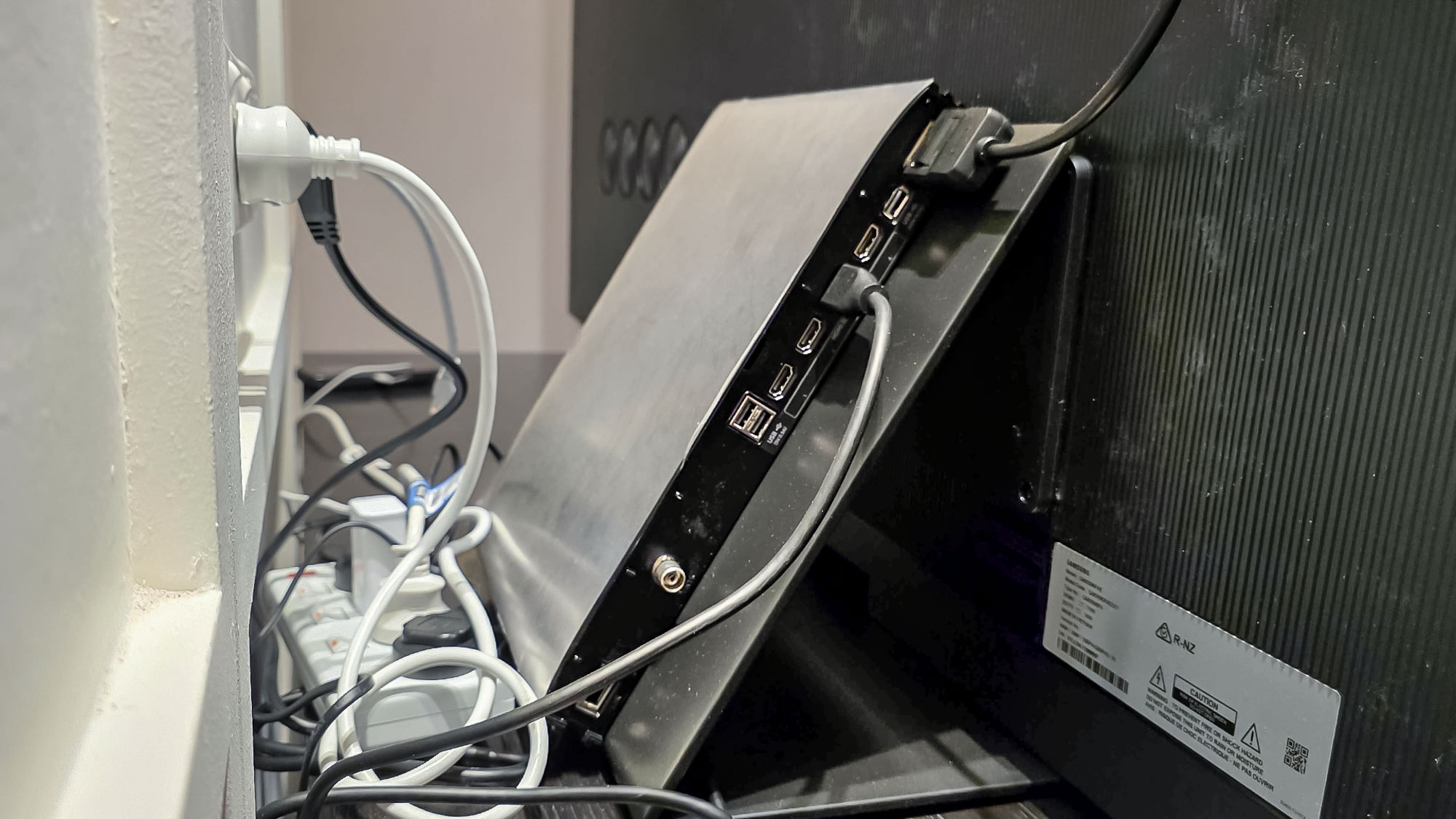
While they share many of the same specs, the design of these TVs couldn't be further apart.
For one thing, the S95F makes use of Samsung’s One Connect Box, a separate box that connects to the panel with a single cable and can be placed anywhere within the TV’s surrounding area. The G5 houses all of its connectivity options in an L-shaped cutout on the pack of the panel.
Your mileage may vary, but I appreciate the S95F’s added flexibility. If you have a particularly crowded home theater setup, the S95F will treat you well.
Critically, the G5 doesn't come with a stand at any size point, as LG assumes that most people plan on taking advantage of the TV's gap-free, wall-mounted design.
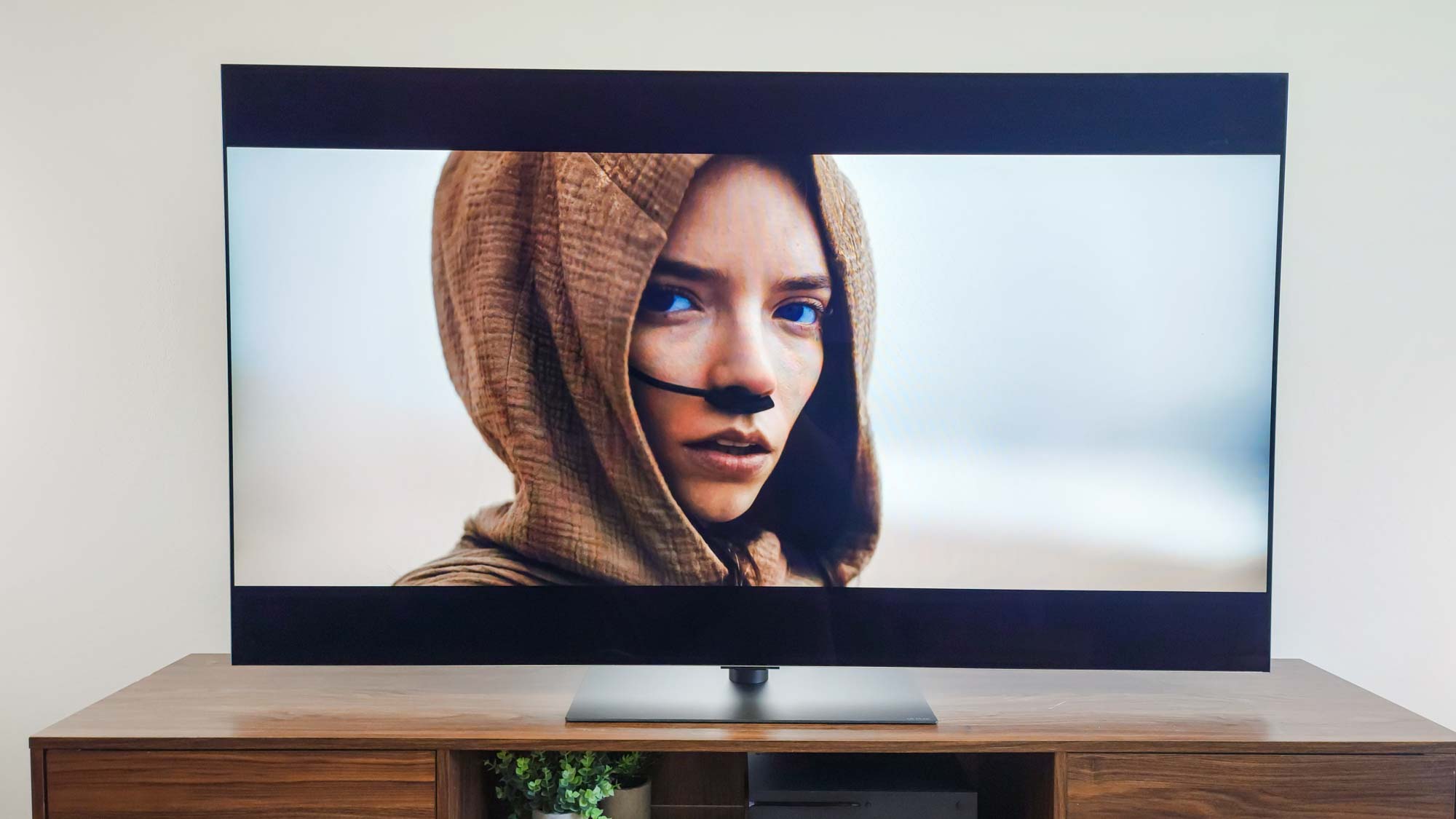
You can check out the G5's separately sold stand in the photo above. It's a sturdy, pedestal-style stand that screws into the back of the panel, and while it's perfectly fine, its absence will be felt by anyone who doesn't plan on wall-mounting the G5.
The S95F, meanwhile, arrives with a center-position, slab-shaped stand that raises the TV enough to make room for a soundbar.
Another key difference between these two TVs lies with their anti-reflective coating. The S95F features a matte finish, which diffuses glare from direct light sources to an astonishing degree.
Depending on your preferences, this might introduce a problem. When viewed in bright or dimly lit rooms, the S95F's matte finish raises the black levels of the TV.
The G5's anti-reflective finish is glossy, so while it doesn't handle direct light nearly as well, it maintains the inky-black look that OLEDs are famous for, even in well-lit rooms.
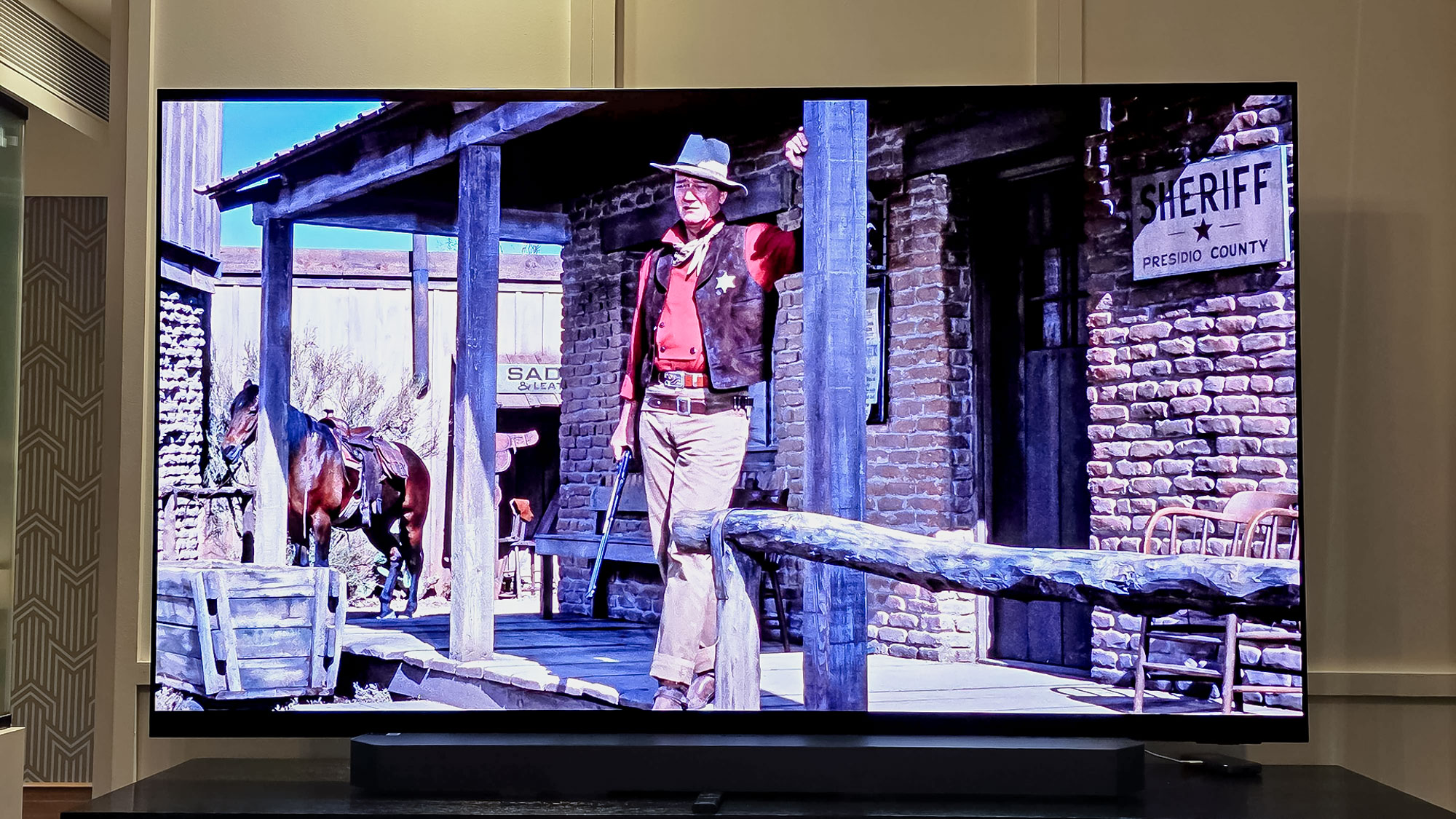
When viewed in bright or dimly lit rooms, the S95F's matte finish raises the black levels of the TV.
Lastly, let's talk about clickers. I love Samsung's Solar Cell remote, as it charges its internal lithium-ion battery by way of indoor and outdoor lighting. It’s very convenient to not have to think about replacing batteries.
The G5 ships with LG's newest remote control, often referred to as LG's AI Remote. It still features the motion-activated controls that folks either love or hate, but LG ditched the remote's dedicated input button, which is a bummer.
Samsung's Solar Cell remote also doesn't feature an input button, so regardless of which TV you go with, you'll be pulling up its menu to switch inputs on the fly.
Each of these TVs will look great on the wall or on top of a credenza, but on the whole, the S95F is a better-designed TV due to its versatility.
There's no denying that the G5 looks more elegant on the wall, but I imagine that more people will be expecting a stand with their next TV.
Winner: Samsung S95F
LG G5 vs Samsung S95F: Performance
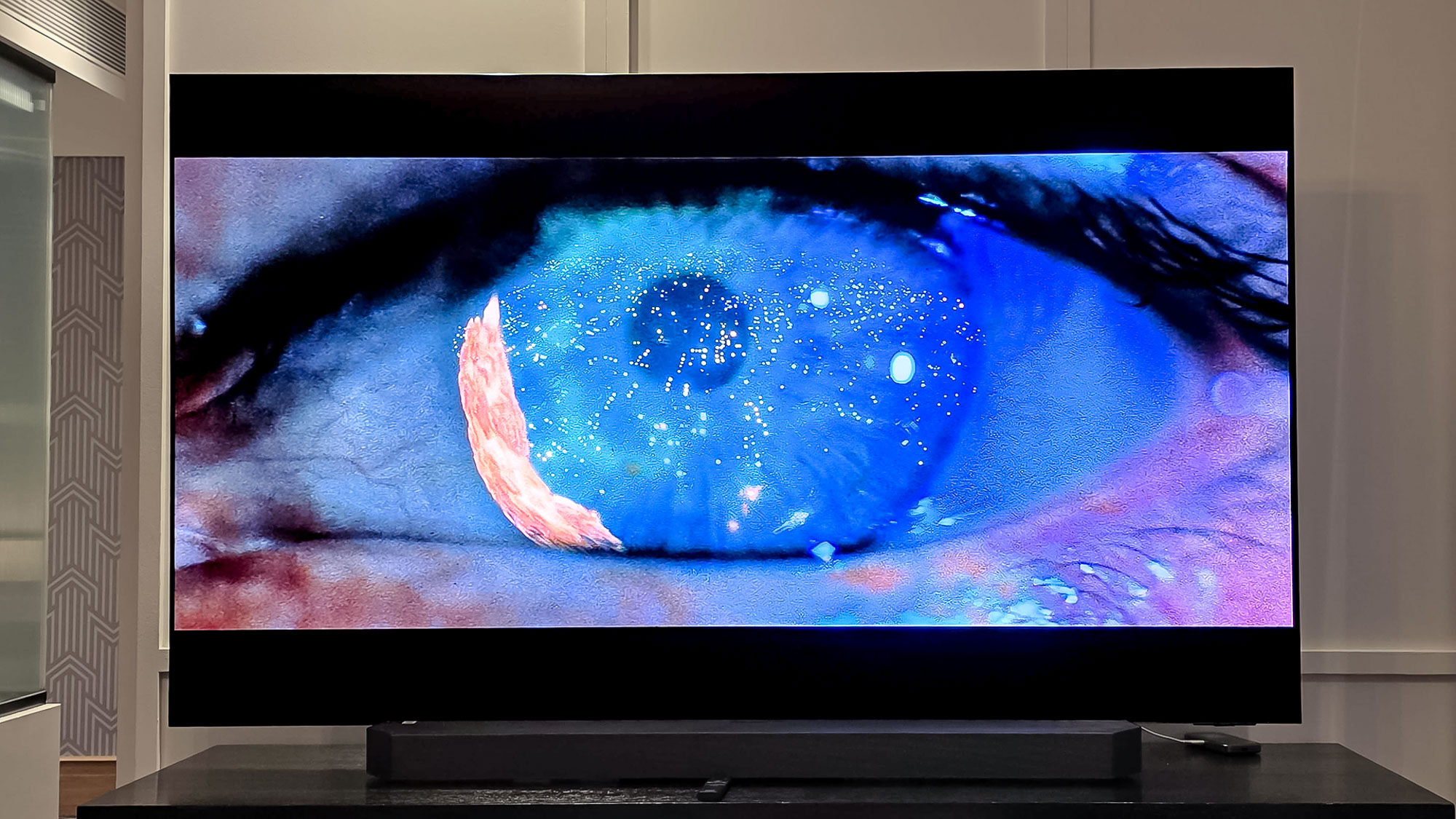
Before we dive into which of these TVs delivers better overall performance, let's take a look at how their test results stack up in a side-by-side comparison.
| Header Cell - Column 0 | LG G5 | Samsung S95F |
|---|---|---|
SDR Brightness (10%, in nits) | 465 | 267 |
Delta-E (lower is better) | 1.9 | 1.2 |
HDR Brightness (10%, in nits) | 2,296 | 2,138 |
UHDA-P3 Gamut Coverage | 99.79% | 99.97% |
Rec. 2020 Gamut Coverage | 82.42% | 90.26% |
Input latency (milliseconds) | 9.2 | 9.2 |
When comparing two TVs, one model is often far better than the other when it comes to picture quality. I won't lie to you: That isn't the case with the G5 and the S95F.
Both sets benefit from OLED's pixel-level dimming in ways we've come to expect. And, since both TVs use souped-up OLED panels, they each deliver dazzling HDR highlights that eclipse the 2,000-nit mark.
But the manner in which they hit this benchmark is different. The G5 uses LG Display's 4th-generation OLED panel, whose marvelous four-stack construction allows for better brightness than any LG Display-engineered OLED to date.
The S95F harnesses the newest iteration of Samsung Display's quantum dot-enhanced OLED display. QD-OLEDs benefit not only from a brighter presentation than garden-variety WOLED panels, they offer brighter, purer colors, too.
You can see evidence of this in their coverage of the Rec. 2020 color space, and rest assured, you'd see evidence of the color-based advantages in real life, too.
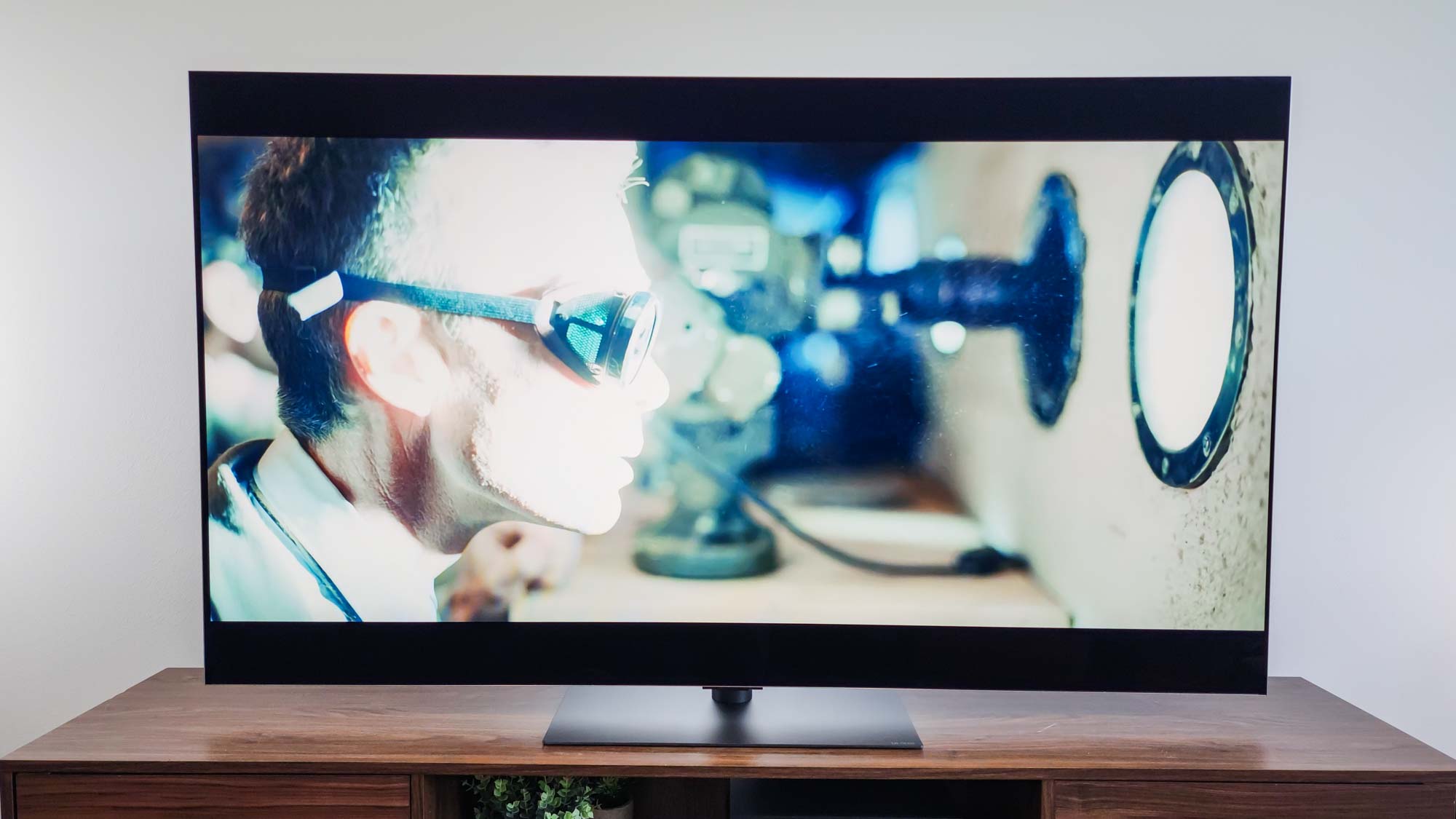
When it comes to picture quality, the G5 and S95F are among the best TVs money can buy.
On the other hand. while watching SDR content (like basic cable and most streaming content), the G5 offers a brighter overall picture. This might matter to you if you find yourself watching TV more often during the day.
Both TVs arrive with incredible out-of-the-box accuracy in their respective Filmmaker modes, and both are super-responsive with input latency measurements that fall below 10ms.
This category isn't as cut and dry as you might expect. When it comes to picture quality, the G5 and S95F are among the best TVs money can buy. You can make an argument for each as to which is the better performer.
Winner: Draw
LG G5 vs Samsung S95F: Smart platform and features
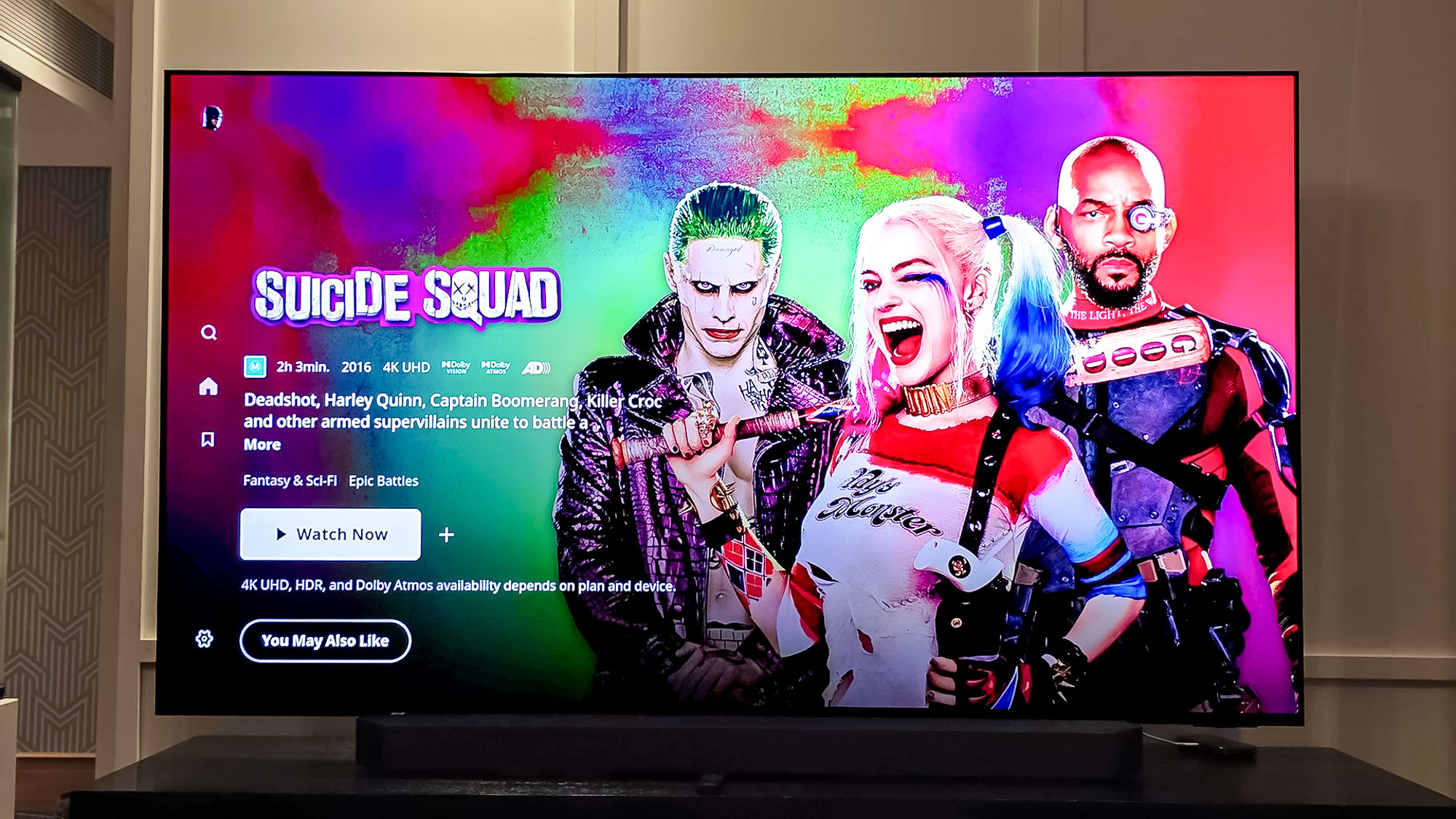
Neither LG's webOS or Samsung's Tizen OS are my smart platform of choice (that honor is split between Roku and Google TV), but they're fine enough to use as daily drivers. Their app support is relatively robust, and each TV has enough processing power under the hood for the experience to be a snappy one.
If you'd rather not splurge on one of the best streaming devices for your living room, these software suites will get the job done.
The G5 and the S95F are among the strongest gaming machines on the market. As mentioned, each TV offers four HDMI 2.1 inputs, and both support Variable Refresh Rate (VRR), G-Sync compatibility and a variation of AMD's FreeSync.
Both TVs easily hit the 4K/120Hz cap of current-generation consoles like the Xbox Series X and the PS5 Pro, and if you want to link up a proper gaming rig, they'll each support 4K games at up to 165Hz.
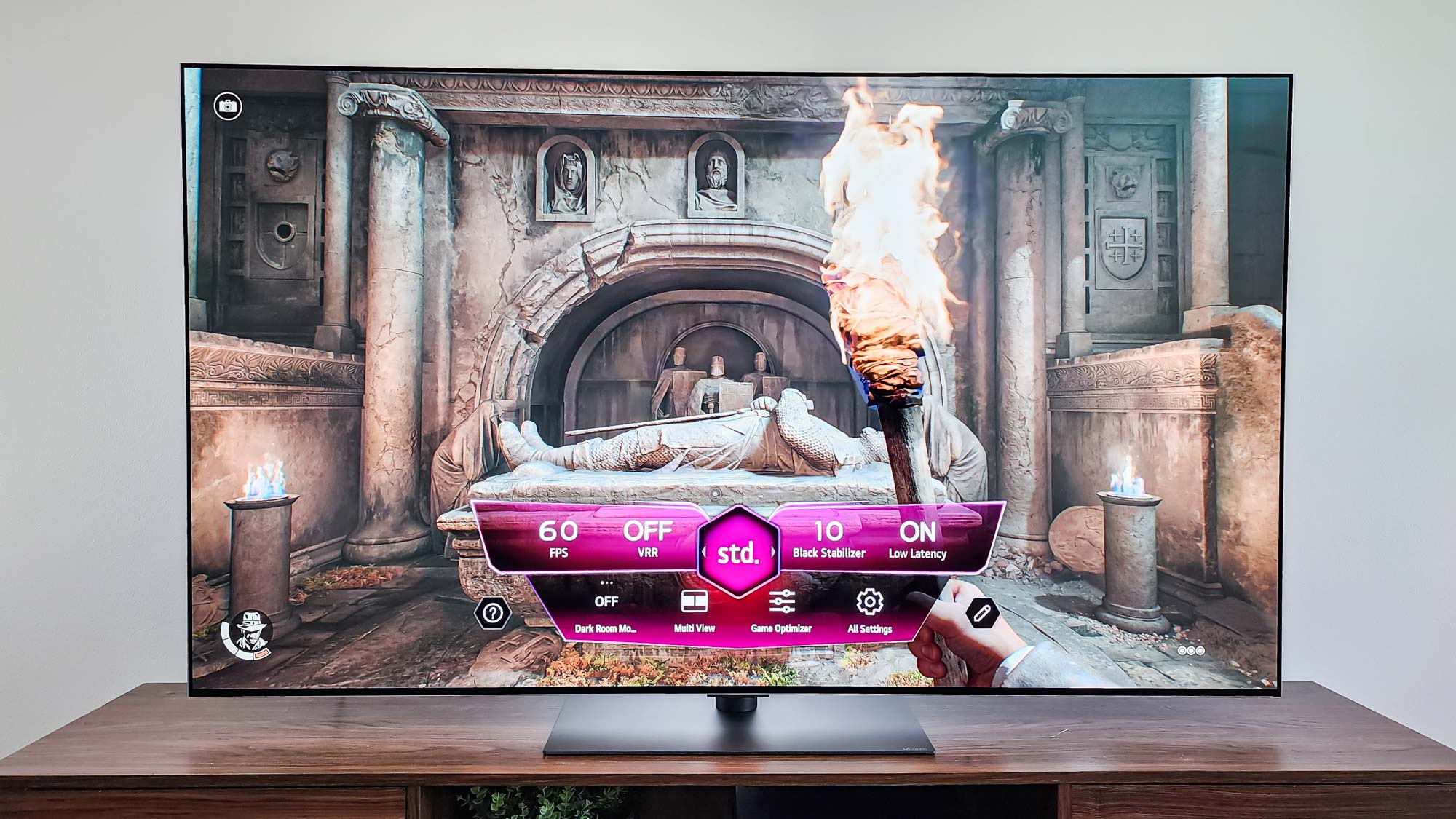
The most noteworthy missing feature on the S95F is Dolby Vision. Most people shopping in this price bracket have probably made peace with this, but it's a frequent sticking point among A/V enthusiasts.
Without Dolby Vision in tow, the S95F is just a step behind the G5 when it comes to extra features.
Winner: LG G5
LG G5 vs Samsung S95F: Outlook
| Header Cell - Column 0 | LG G5 | Samsung S95F |
|---|---|---|
Specs (25) | 24 | 24 |
Design (25) | 21 | 23 |
Performance (25) | 25 | 25 |
Features (25) | 25 | 23 |
Total Score (100) | 95 | 95 |
It's a photo finish.
If you're already committed to spending flagship-level prices, this decision ultimately comes down to two things: TV design and Dolby Vision support.
The G5 looks better on a wall than the S95F thanks to its gap-free design. However, its screen won't handle direct glare nearly as well, and if you want to set it up on a credenza, you'll have to settle for a separately sold stand.
The S95F comes with a stand, but although it diffuses glare better than most TVs, it does so at the expense of deeper black levels in dim to well-lit rooms. You might find that the richer black levels and glossy finish of the G5 is more suited to your taste.
Setting aside these differences, if Dolby Vision support is non-negotiable, you're going to have to go with LG's flagship.
And then there's pricing. The 65-inch LG G5 is $2,949 at Amazon, while the 65-inch Samsung S95F is currently $3,297.
These TVs will always be pricey, but if you're looking to stretch your dollar as much as possible, I recommend keeping an eye on stock during major sales events like Prime Day and Black Friday.
More from Tom's Guide

Michael Desjardin is a Senior Editor for TVs at Tom's Guide. He's been testing and tinkering with TVs professionally for over a decade, previously for Reviewed and USA Today. Michael graduated from Emerson College where he studied media production and screenwriting. He loves cooking, zoning out to ambient music, and getting way too invested in the Red Sox. He considers himself living proof that TV doesn't necessarily rot your brain.
You must confirm your public display name before commenting
Please logout and then login again, you will then be prompted to enter your display name.
 Club Benefits
Club Benefits





